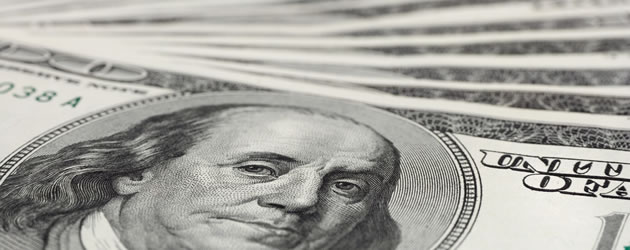
The Pound to US Dollar exchange rate (GBP/USD) remained close to 1.5570 yesterday as markets reacted in contrasting ways to a poor US Durable Goods Orders print.
At the start of the North American session the US Commerce Department announced that orders for manufactured goods that are designed to last for over three years declined at an annualised rate of -7.3% in July. The poor result, which came in almost twice as bad as forecasts for a -4.0% reduction, was the worst score since August 2012 and ended a run of three successive months of expansion.
It is thought that the recent uptick in market interest rates, stemming from speculation that the Fed stimulus programme may be slowed down in September, had a negative affect on consumers’ ability to purchase expensive large-scale goods.
GBP/USD initially rallied by around 0.3 cents when the figures were released, but ran into resistance around the psychologically significant 1.5600 level and Sterling fell back to its opening levels against the ‘Greenback’.
The market reaction to the figures was interesting because it shows that traders are still unsure as to whether the taper will take place in September. The instant US Dollar decline suggests that some areas of the market are still under the impression that the Federal Reserve’s easing plan is dependent on domestic data printing positively, however, the subsequent US Dollar rallies signal that some investors are adamant that a slowdown of asset purchases will be announced next month.
If it is indeed true that consumer confidence took a hit in July as a result of taper-driven interest rate fluctuations then it stands to reason that the US economy is still performing well; that the Durable Goods Orders print was caused by a period of spending habit adjustment rather than an inherent weakness in the US financial system.
With Durable Goods, New Home Sales, Jobless Claims and Manufacturing data all coming in worse-than-expected during the past seven days economists are now beginning to price in the possibility of a slightly smaller reduction in Fed asset purchases of around $10-15 billion rather than previous forecasts of $20-25 billion. A more moderate stimulus slowdown is likely to have a more subdued positive impact on demand for the US Dollar.
Resistance for the Pound to US Dollar exchange rate (GBP/USD) now exists at 1.5751 and then 1.5885. Whilst support exists at 1.5500 and then 1.5434.
Later on today US Consumer Confidence is expected to print at 79.0 for August, down from 80.3 in July, but unless a strong deviation from the forecast is witnessed market volatility is likely to remain low in reaction to the print. Tomorrow Bank of England Governor Mark Carney is set to give a speech on the British economy in which he is expected to temper talk of an earlier-than-anticipated rise in UK interest rates. The Pound could find itself declining if Sterling traders are unimpressed by the BoE Chief’s comments.

Comments are closed.